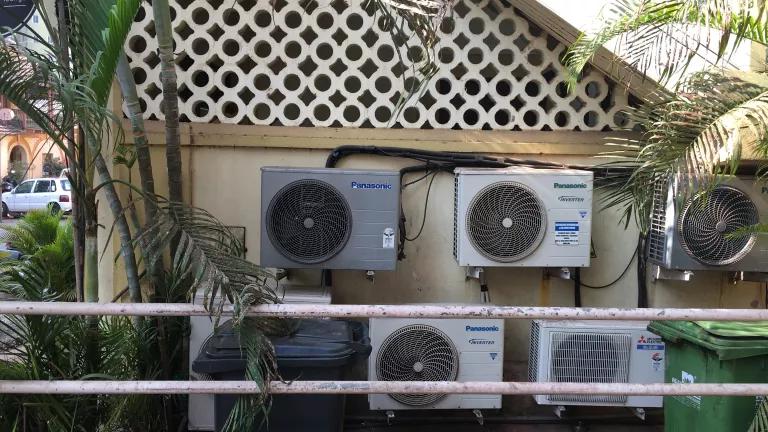
Huge LED screens below a hoarding with tips on keeping cool during extreme heat in Ahmedabad, Gujarat, India.
May typically brings the very hottest days to central India, and sees the heat season begin in earnest with summer temperatures often soaring over 100°F (37.8°C) for extended periods. However, this year, the heat began early. This year, since mid-April drought has coupled with blistering heat far above typical summer temperatures. The terrible heat has reportedly claimed 300 lives since early April. It’s estimated that 330,000 people in India live in areas at high risk from this early-season heat. In eastern India’s Odisha state, the town of Titlagarh hit 119.3 degrees Fahrenheit (48.5°C)—the highest temperature ever recorded in that state during April.
We know that climate change is already fueling more frequent, more intense heat waves. Recently, a big international study of the effects of extreme heat on worker productivity found that more than one billion workers in vulnerable countries like India already grapple with severe heat in the workplace. Some key world regions would face almost an entire month of added extreme heat each year by 2030, and a 10 percent loss in working hours from the contribution of climate change to heat, which reduces productivity, increases the need for breaks and heightens risk of illnesses and on-the-job injuries.
But cities in India are taking action to protect their people from this extreme heat. In 2013 the city of Ahmedabad, in western India’s Gujarat state, developed the first heat-health early warning system in South Asia, with the help of NRDC, the India Institute of Public Health in nearby Gandhinagar, and a host of other terrific partners who developed an innovative pilot project. The Heat Action Plan provides coordinated heat-health warnings when extreme heat is forecast, communicates heat-health risks to the public, the media and officials, and helps health professionals recognize and treat heat-related illnesses.
And this year, the India Meteorological Department (IMD) is providing five-day advance forecasts to over 100 cities. This is huge news, because it’ll enable development of more and more Heat Action Plans, and boost the capacity of municipal authorities to warn citizens and respond to looming heat waves. Another ten cities and two regions in India just launched their own Heat Action Plans, inspired by Ahmedabad’s—for a total of ten million people now living in cities with Heat Action Plans.
Extreme heat isn’t just about India—it’s recognized as an international public health issue. Heat isn’t just an inconvenience—it kills people. The Third US National Climate Assessment in 2014 told us that climate-health effects are happening here and now, right in our backyards. And heat is probably the most direct effect of climate change. Here in the US, the White House has designated May 23-27 Extreme Heat Week. Our own National Oceanic and Atmospheric Administration (NOAA) is developing a National Integrated Heat Health Information System with the US CDC, to develop responses to extreme heat.
When it comes to our health, climate change gets very personal. There’s no “control group” with climate change, because it threatens communities everywhere. We have an enormous opportunity to create healthier, more secure communities by following the lead of cities that are becoming more heat resilient.



